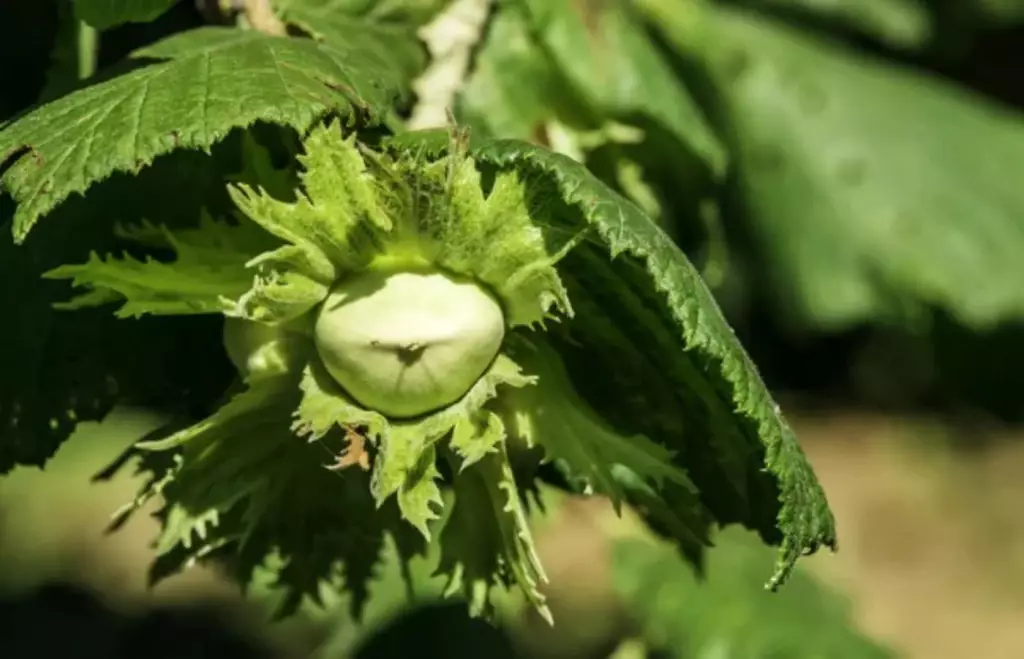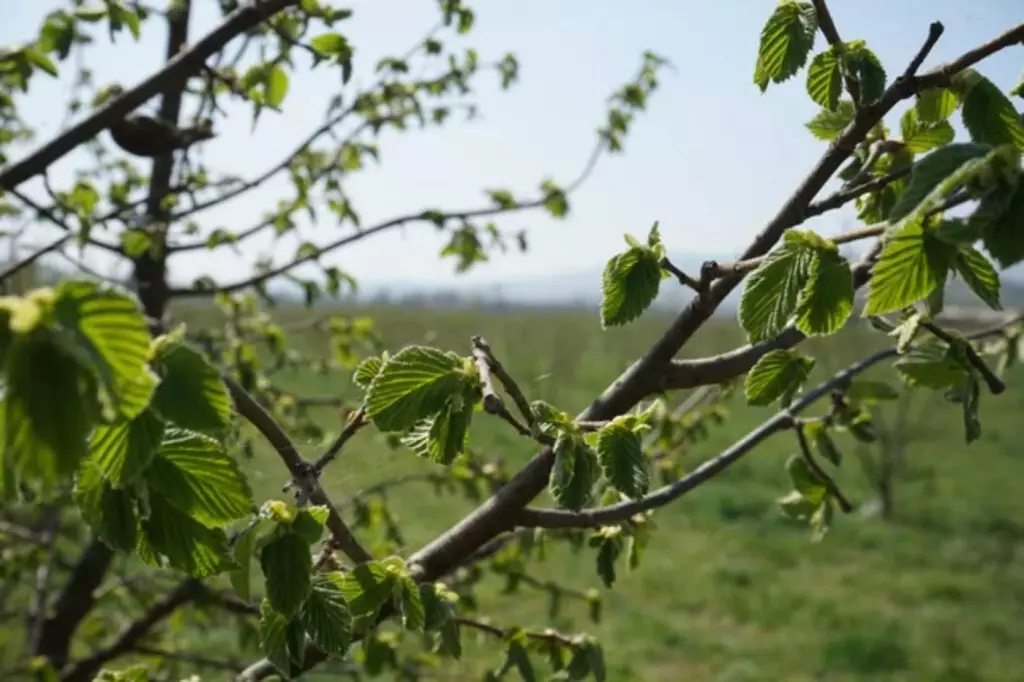Do Hazelnuts Grow on Trees or Bushes? (And How Fast)
There's often curiosity about the origins of hazelnuts- whether they emerge from the sprawling branches of trees or the dense foliage of bushes. The answer lies in the fascinating journey from planting to harvest, a process that reveals not only their source but also the timeline for their production. Let's explore the unique growth habits of hazelnuts and shed light on whether they originate from trees or bushes.
Hazelnuts grow on trees, specifically the Corylus species, which can also form large shrubs. They mature slowly, taking 3 to 5 years to start producing nuts after planting, and can reach full production in 7 to 10 years, depending on the variety and growing conditions.
The European hazelnut grows tall like a tree, but the American hazelnut likes to spread out more, kind of like a big bush. This makes us curious about other kinds of hazelnuts. Let's find out together if they grow up high as trees or stay low like bushes.
Summary
- Corylus avellana (European hazel) typically grows as a bushy shrub and is widely cultivated for its nuts, while Corylus colurna (Turkish hazel) naturally grows as a tree and is valued for urban landscaping due to its resilience and structure.
- Hazelnut bushes may start yielding nuts in 3–5 years, while hazelnut trees typically take a bit longer, starting in 4–6 years.
- The adaptability of hazelnuts to different USDA Hardiness Zones (4-9 for most varieties) makes them suitable for a wide range of geographical locations.

On this page:
Do Hazelnuts Grow on Trees?
Actually, hazelnuts come from the genus Corylus, which can grow as either trees or shrubs. Your hazel plant will typically develop into a large multi-stemmed shrub, but with a little patience and the right conditions, it can form a small tree.
Depending on the particular species and the environmental conditions, you might see hazelnuts growing on a plant that fits the description of a tree.
Here are some hazelnut facts for you:
- Species: Hazelnut plants belong to the Corylus genus.
- Height: They can grow to be 12-20 feet tall as trees.
- Growth habit: Hazelnuts can form a tree-like structure with one main trunk if pruned properly, but they naturally tend to be multi-trunked.
It's fascinating to note that your hazelnut plant may start off looking more like a bush but can be trained over time to take on a more treelike form.

This involves careful pruning to encourage a central leader or main trunk. With time, your efforts can result in a hazelnut tree that not only provides delicious nuts but also serves as an attractive feature in your garden.
Hazelnut species and their growth form
| Species | Common Name(s) | Origin | Growth Form |
|---|---|---|---|
| Corylus avellana | European hazel, Common hazel | Europe, Western Asia | Bushy shrub |
| Corylus americana | American hazelnut | Eastern United States | Shrub, can be tree-like |
| Corylus colurna | Turkish hazel | Southeast Europe, Asia Minor | Tree |
| Corylus maxima | Filbert, Giant hazel | Southeast Europe, Turkey | Shrub |
| Corylus cornuta | Beaked hazel | North America | Shrub |
| Corylus heterophylla | Asian hazel | Asia | Shrub, can be tree-like |
| Corylus chinensis | Chinese hazel | China | Tree |
| Corylus avellana 'Contorta' | Corkscrew hazel | Cultivar (origin from C. avellana) | Shrub |
The European hazel grows as a shrub
The European hazelnut is perhaps the most well-known species, primarily cultivated for its nuts. It is characterized by its bushy shrub form, making it accessible for nut harvesting.
Its wide native range across Europe and Western Asia indicates its adaptability to various environmental conditions.
The American hazelnut springs up from a shrub
Native to the eastern United States, this species typically grows as a multi-stemmed shrub. It is valued both for its nuts and as a wildlife habitat, offering food and protection for various animal species.
The ability of C. americana to occasionally adopt a tree-like form demonstrates its versatility in growth habits.
The Turkish hazel grows as a tree
Known for its tall stature, the Turkish hazel stands out as a true tree form within the genus. Its native range in Southeast Europe and Asia Minor contributes to its preference for climates found in these regions.
Corylus colurna is often used in urban landscaping due to its resilience and attractive structure.
How Fast Do Hazelnuts Grow on Trees or Bushes?
Hazelnuts are relatively fast growers. The trees typically mature to produce nuts within 2 to 5 years after planting. As they develop, your hazelnuts will grow up to 2 feet per year.
These growth rates depend on the conditions provided for the hazelnut trees or bushes, including sunlight, soil quality, and water.
Once established, hazelnut trees can yield significantly, some producing up to 2,000–3,000 pounds of nuts per acre. You can look forward to this annual harvest for many years, as a well-maintained hazelnut tree can remain productive for up to 50 years.
| Aspect | Bushes | Trees |
|---|---|---|
| Growth rate | Faster establishment | Slower initial growth |
| Time to maturity | Produces nuts in 3-5 years | Produces nuts in 4-6 years |
| Yield | Slightly lower per plant | Higher per tree |
| Harvest | Easier by hand | Suited for mechanical harvesting |
| Maintenance | More frequent pruning | Less frequent pruning |
Comparing the growth habit
- Hazelnut bushes are typically multi-stemmed and can be denser. They can be managed through pruning to maintain bush form.
- Hazelnut trees are single-trunked and can grow taller with a more defined canopy. Pruning focuses on tree structure and health.

Comparing the growth rate
- Hazelnut bushes are generally fast to establish and may begin producing nuts slightly earlier due to their bushy nature which allows for more sunlight capture and energy distribution across multiple stems.
- Hazelnut trees may have a slightly slower initial growth rate as energy is directed towards establishing a single, stronger trunk, but once established, growth rates can be comparable.
Comparing the time to maturity
- Hazelnut bushes can start producing nuts in 3-5 years, with full productivity reached around 7-8 years.
- Hazelnut trees may start producing nuts in 4-6 years, with full productivity potentially taking a year or two longer compared to bushes.
Yield from hazelnut bushes vs. trees
- Can be more accessible due to the lower height and denser branching, potentially making hand-harvesting easier. However, the overall yield per plant may be slightly lower due to energy distribution among more stems
- Hazelnut trees have a higher potential yield per tree in the long term due to their larger size and more focused energy investment in nut production. Mechanical harvesting is more feasible with tree forms.
Comparing the ease of harvest from hazelnut bushes vs. trees
- It is easier to harvest by hand from hazelnut bushes due to their lower height. Bushes can be shaken or beaten to encourage nuts to fall.
- Mechanical harvesting is more efficient with trees, but manual harvesting is more challenging due to height.
Space efficiency of hazelnut bushes compared to trees
- Bushes may require more ground space to accommodate their wider spread, affecting planting density in a given area.
- Trees, with their upright growth, allow for higher-density planting in orchards, maximizing space usage.
Where Do Hazelnuts Thrive?
Hazelnut trees have specific climate preferences and grow best within certain geographical regions and USDA Hardiness Zones.
Hazelnuts favor a temperate climate, traditionally thriving in regions of Europe, North America, and parts of Asia. Your success with hazelnuts will greatly depend on matching the tree to a suitable climate that mimics its natural habitat.
USDA Hardiness zones for cultivation of hazelnuts
Hazelnuts are hardy in a range of USDA Zones. Specifically, they perform well in zones 4 through 9, with some varieties more suited to the cooler end of this spectrum (zones 4-6), and others preferring the warmer range (zones 7-9).
Choose a variety that matches your local conditions to ensure healthy growth and bountiful harvests.
| Hazelnut Species | Preferred USDA Hardiness Zones | Climate Preference |
|---|---|---|
| American hazelnut | Zones 4-9 | Adaptable to a wide range, but thrives in the cooler end. |
| European hazelnut | Zones 4-8 | Performs well across a broad spectrum, with a preference for cooler climates. |
| Turkish hazelnut | Zones 5-7 | Better suited for zones in the middle of the spectrum, indicating a balance between cool and moderate temperatures. |
| Beaked hazelnut | Zones 4-8 | Prefers cooler climates similar to the European hazelnut. |
| Hybrid varieties | Zones 5-9 | Developed to enhance disease resistance and climate adaptability, with some varieties favoring warmer zones. |
Where Do Hazelnuts Grow Best?
Hazelnuts, also known as cobnuts or filberts depending on their species and region, thrive in very specific growing conditions, which are crucial for their development and nut production. Here’s a more detailed discussion of where hazelnuts grow best, focusing on these key requirements.

They grow best in temperate climates
Hazelnuts require a temperate climate with distinct seasons, including a cold period to break dormancy and a warm summer for nut development.
The cold period is essential as it triggers the hazelnut trees to end their dormancy phase and start the new growing season. This chilling requirement varies among species and cultivars but is generally between 800 to 1,200 chilling hours below 7°C (45°F).
However, they are sensitive to extreme cold, particularly when temperatures drop below -20°C (-4°F), which can damage the trees. Moreover, hazelnuts need an adequate growing season free from early fall frosts, as these can damage the nuts and impact yield.
They like deep, well-drained soils
While hazelnuts are adaptable to various soil types, they grow best in deep, well-drained soils that are fertile and have a slight acidity. The ideal pH range for hazelnut trees is between 6.0 and 6.5.
Proper soil preparation before planting is crucial to ensure that the soil meets these conditions. This can involve adjusting the pH, improving soil structure and fertility by adding organic matter, and ensuring good drainage to prevent waterlogging, which hazelnuts do not tolerate well.
They thrive well in areas with consistent moisture
Hazelnut trees require consistent moisture for optimal growth, especially during the growing season. However, they do not tolerate standing water, so irrigation practices should ensure that water is available but not excessive.
Drip irrigation systems are often used in commercial orchards to provide water directly to the root zone of the trees, minimizing water waste and reducing the risk of fungal diseases that can occur with overhead watering.
They grow best when exposed to full sunlight
Full sunlight is essential for hazelnut trees to produce a good yield. They should be planted in locations where they can receive at least six hours of direct sunlight daily.

Good airflow is also crucial to minimize the risk of fungal diseases. Planting trees with adequate spacing and in locations that receive good air circulation can help in preventing issues such as Eastern Filbert Blight, which is a significant concern in hazelnut production.



